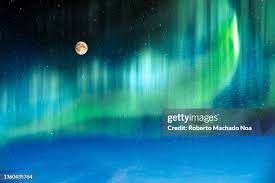
Introduction
The Northern Lights, also known as Aurora Borealis, are one of nature’s most captivating spectacles. This mesmerizing event draws thousands of visitors to northern Canada, especially during the winter months, when the skies come alive with vibrant colors. As the world becomes increasingly interested in sustainable tourism and natural wonders, the Northern Lights remain a symbol of beauty and a point of intrigue for scientists and travelers alike.
What Causes the Northern Lights?
The Northern Lights are created by the interaction between charged particles from the sun and the Earth’s atmosphere. When these solar particles collide with gases such as oxygen and nitrogen at high altitudes, they emit light in various colors, typically green, pink, yellow, and violet. This electric display is most often visible in areas within the magnetic poles, leading to their prominence in regions like Yukon, Northwest Territories, and Nunavut in Canada.
Recent Developments and Sightings
2023 has proven to be a vibrant year for Aurora watchers, with increased solar activity attributed to an approaching solar maximum in the 11-year solar cycle. In September 2023, heightened auroral activity was reported, with stunning displays visible across various provinces including Alberta and Manitoba. As scientific understanding of solar cycles improves, meteorologists are better equipped to predict these dazzling events, making it easier for enthusiasts to plan trips around peak viewing times.
In addition, advancements in technology have enhanced the ways in which we can observe and photograph the Northern Lights. The rise of social media has led to a surge in amateur astronomers sharing their experiences online, creating communities dedicated to exploring this celestial event. Online platforms are filled with awe-inspiring images and locations tagged for optimal viewing.
Tourism and the Northern Lights
The popularity of the Northern Lights has significantly bolstered tourism in northern Canadian regions. Local governments and tourism boards are promoting aurora-related activities, including guided tours, local festivals, and cultural experiences that enrich visitors’ understanding of Indigenous perspectives on the Northern Lights. The opportunities to engage with the local environment have made trips to see the auroras not just about witnessing a natural phenomenon but also about cultural education and appreciation.
Conclusion
As scientific curiosity and ecological awareness rise, the Northern Lights continue to capture the imagination of people around the world. Their beauty serves as a reminder of our planet’s wonders and the importance of preserving these natural phenomena. For both locals and travelers, witnessing the Northern Lights is a profound experience that transcends mere visual appeal, fostering a connection to the natural world and inspiring conservation efforts for future generations. As we look to the future, the continued study and observation of the Northern Lights will undoubtedly yield new insights into both our solar system and our planet’s atmosphere.



